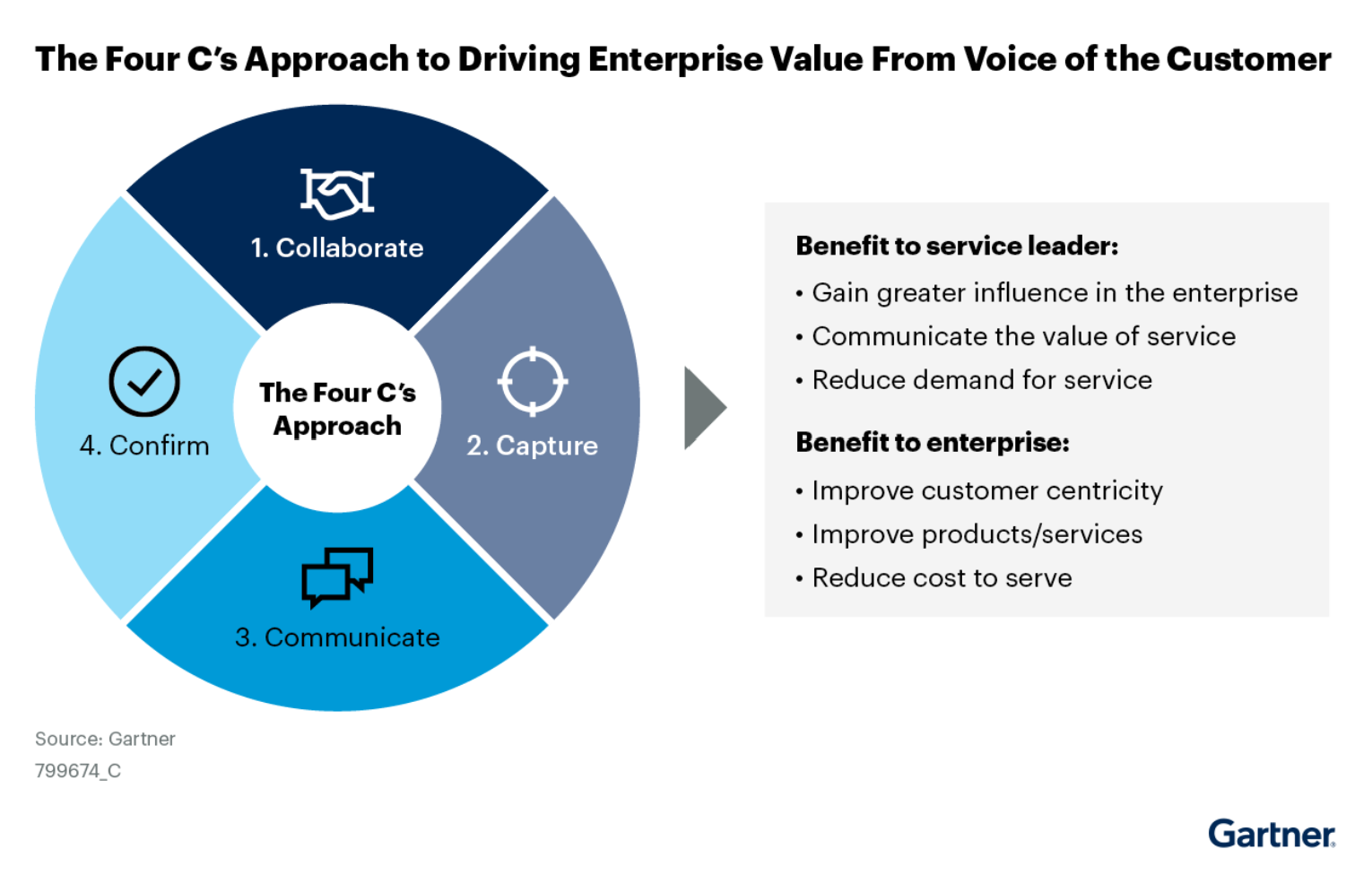By 2026, Gartner predicts that 65 percent of CEOs will use customer data collected by customer service as a part of their company's strategic decision-making. But today, customer service and support leaders often struggle to influence enterprise strategy.
Why? Because while customer feedback contains a wealth of information that could benefit the wider organization, everyone from marketing and sales to product management and operations, most business functions don't act on it due to poor cross-functional collaboration with service and support and the lack of a fit-for-purpose voice of the customer strategy. As a result, insight is communicated in an ad hoc manner and those insights are misaligned to the needs of those functions.
Addressing these challenges is critical, as VoC insights should benefit the whole enterprise. Achieving this will enable service leaders to demonstrate the true value of their function and influence the decision-making of others.
To address some of these struggles and truly drive enterprise value from VoC, Gartner recommends focusing on a four-step process (see the figure below).

Step 1: Collaborate to Understand Other Functions' Priorities
In a recent Gartner survey, more than a third of customer service or support organizations reported a lack of collaboration as their biggest challenge when using data and insights from VoC to influence other business functions. As a result, leaders commonly share service metrics like customer satisfaction rather than VoC, which would be of greater value to other functions.
Leaders should aim to better understand the priorities of cross-functional peers so that VoC insights are both well-received and valued. This can be accomplished by establishing a regular cadence of one-to-one sessions with other functional leaders to understand and identify specific knowledge gaps where additional customer feedback can provide value.
Leaders should start by asking questions such as Which customer-impacting initiatives are you planning for later this year? or What do you wish you knew about our customers and why? or Of the VoC insights that service and support has shared with you in the past, which have been the most and least valuable?
Step 2: Capture, Gather, and Interpret Data
Forty-five percent of customer service or support organizations reported an inability to connect their own data to data owned by other functions, according to Gartner's recent survey. To generate useful insights, it is very likely that the current collection methods will need to evolve.
Leaders should work closely with business and data analysts to refine and adapt their VoC data collection methods by incorporating the requirements gathered from the collaboration phase. For example they might consider adding a post-interaction survey question to gather product feedback or incorporating new keyword filtering into their speech and text analytics to gather competitive intelligence.
Step 3: Communicate and Link to Other Functions' Business Objectives
To drive greater impact, service leader themselves must take the lead role when communicating the findings from the collaboration and capture phases. Leaders should leverage their business acumen to ensure the insights that are communicated align to other functions' business objectives. In doing so, customer service will act as an intelligence hub of customer feedback, allowing internal teams to understand what customers want. This, in turn, will demonstrate the value of service and support VoC, ensure the insights have the maximum impact, and enable service leaders to gain influence.
Step 4: Confirm and Assess Your Impact
Verifying that service insight drove improvements in both departmental and enterprise-wide objectives is critical if service and support leaders are to demonstrate the value of their function to the enterprise through their VoC efforts. Leaders should collect feedback from and close the loop with cross-functional stakeholders, treating the confirm phase as an extension of the collaborate phase.
Customer data gathered through VoC feedback is unique to the service organization and should be considered a powerful asset to service leaders. These four pillars can help leaders gain influence and turn customer service into a VoC intelligence hub to impact and improve enterprise-level business results.
Brian Weber, Deborah Alvord, Daniel O'Sullivan, and Christopher Sladdin are analysts with the Gartner Customer Service and Support practice, covering topics such as CRM strategy and customer experience, service and support strategy and leadership, and more.